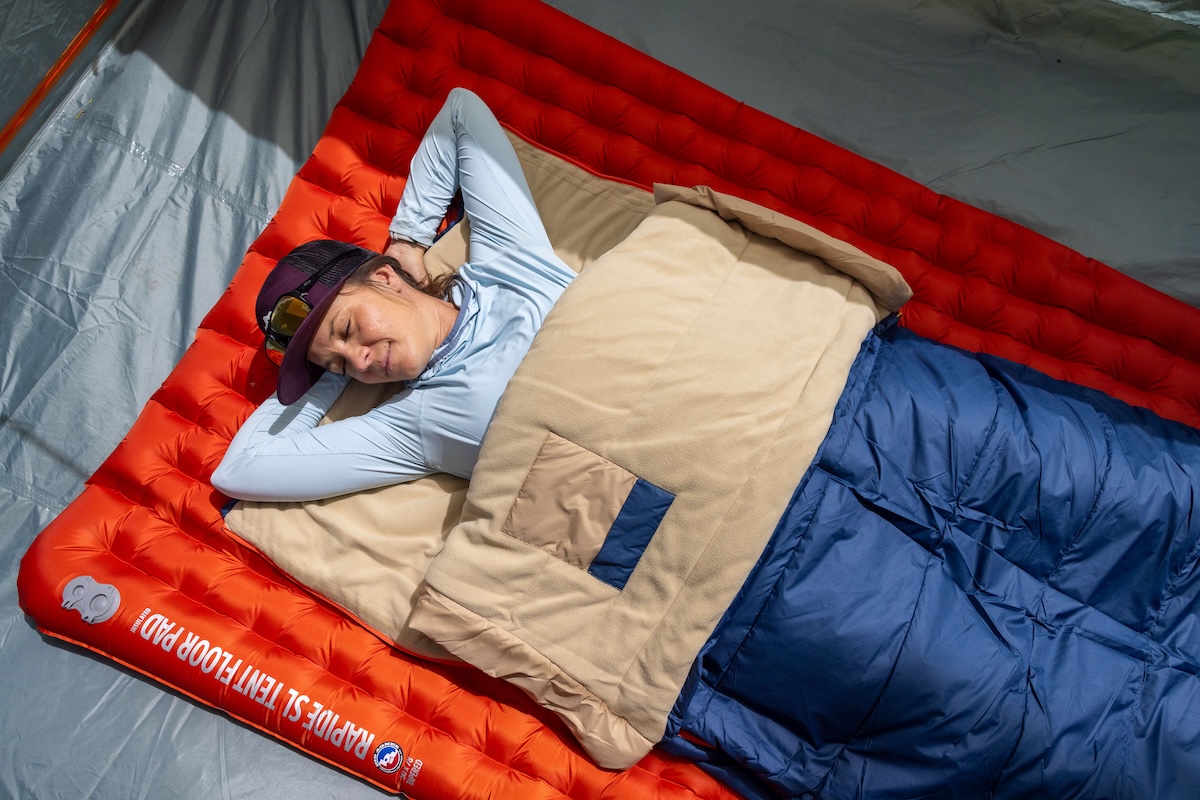
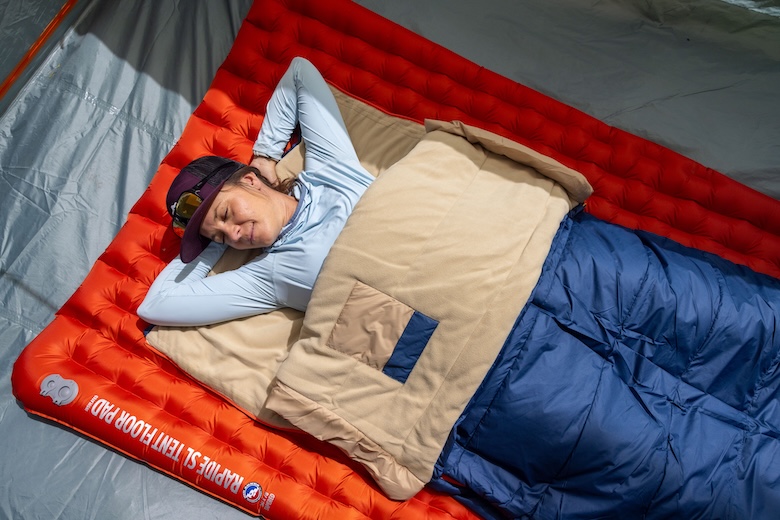
Price: $130
Fill: Synthetic (polyester)
Weight: 4 lb. 14.3 oz. (Regular size)
Temperature Rating: 20°F (35°F available)
What we like: Lots of comfort, nice-to-have features, and a reasonable price tag.
What we don’t: Not as warm as expected, and heftier than other competitors.
See The North Face Wawona Bed 20
The North Face Wawona Bed 20 isn’t designed for ounce-counters, ultralighters, or even backpackers at all, but it is a car camper’s dream. I tested the regular-length version on camping trips to Moab, Utah and in the Uncompahgre National Forest outside of Lake City, Colorado, where nighttime lows dipped into the upper 30s Fahrenheit. As a self-proclaimed cold sleeper who usually refuses to put myself in situations that require anything colder than a 20-degree bag in the Rockies, I came away impressed with the overall package. Is this the warmest bag I’ve ever used? Nope. But it delivered a cocoon-like, fleecy comfort that felt like snuggling with a teddy bear and plenty of internal wiggle room for me to sprawl out. Bonus: It still manages to pack in a few thoughtful design features at a price that’s more than reasonable for frequent car campers. Read on to learn more about my experience with the Wawona Bed 20. To see how it stacks up to the competition, check out our full review on camping sleeping bags.
Let’s start with the obvious: The North Face Wawona Bed 20 isn’t a sleeping bag you want to take to high-alpine basecamps or into sub-freezing temps. But that’s not what it’s for. During my test trips in Moab, Utah, and Lake City, Colorado, overnight lows varied between 35 and 50 degrees Fahrenheit, with chillier nights hitting hard in southern Colorado. On the warmer nights, I was perfectly comfortable, and almost too warm. But on the colder end of that spectrum, I felt a bit chilled, even with a beanie on. I chalk that up to two things: I’m a cold sleeper, but there’s also a lot of space inside this bag for one body to warm up. At 5’5”, I’m not tiny, but I’m definitely not filling all the air pockets in this roomy rectangle. The lack of a hood also means there wasn’t anything to pull over my head, so wearing a beanie became essential.
That said, you can cinch the top of the sleeping bag to help trap some heat, and the recycled polyester insulation does an adequate job of holding in warmth. But for me, I’d say the Wawona 20 is best suited down to 40 or 45 degrees. The “20-degree” name is misleading if you’re going by women’s EN/ISO comfort ratings, which The North Face doesn’t specify for this bag. Like many unisex-rated bags, it skews toward the average male sleeper. This isn’t necessarily a deal breaker, but it is nice to know, depending on your use case, expectations, and how cold you sleep.
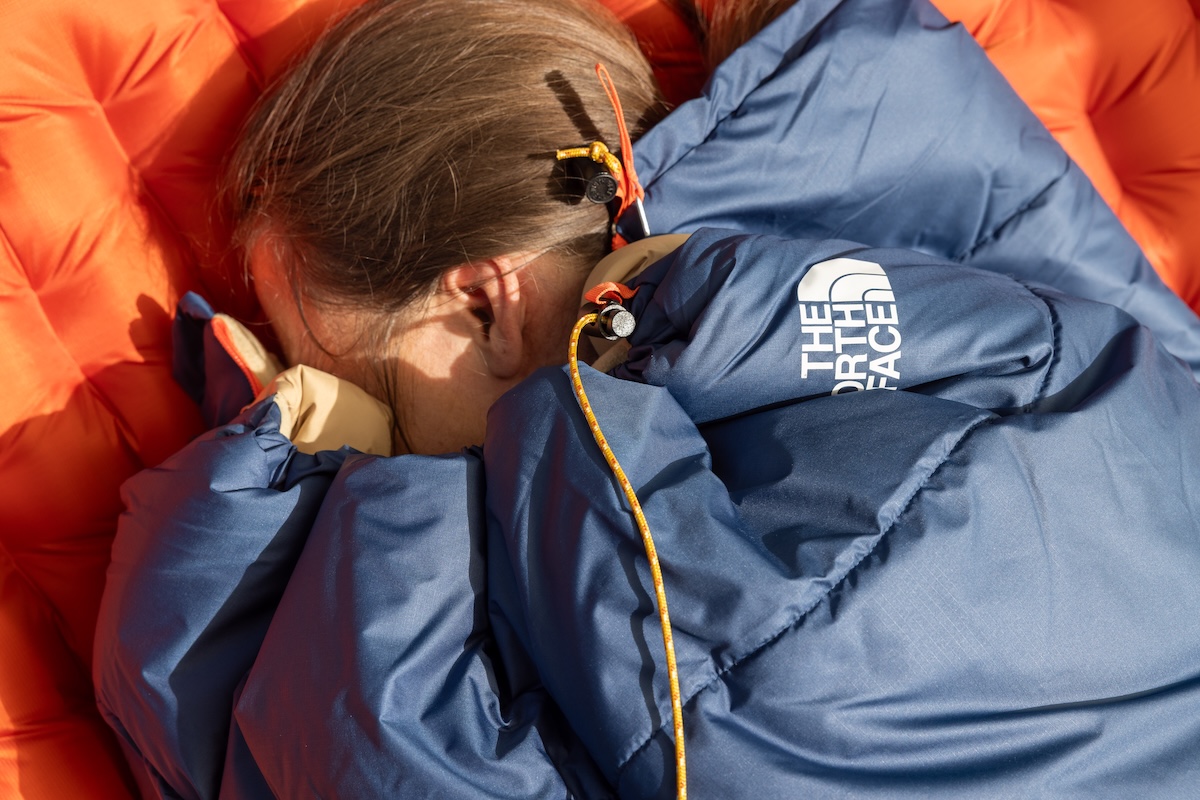
This is an area where the Wawona Bed 20 really shines. I haven’t slept in a rectangular bag in a while, typically opting for a mummy-shaped bag, and I didn’t realize how much I would enjoy having some extra wiggle room. With the regular-sized Wawona, you’re looking at a 78-inch length along with a 64-inch circumference at the neck, hips, and feet (because yes, it’s rectangular and doesn’t taper towards the bottom). In contrast, a typical mummy bag averages about a 60-inch girth at the hips and about a 42-inch girth at the feet. Bottom line: You get a lot of space with the Wawona.
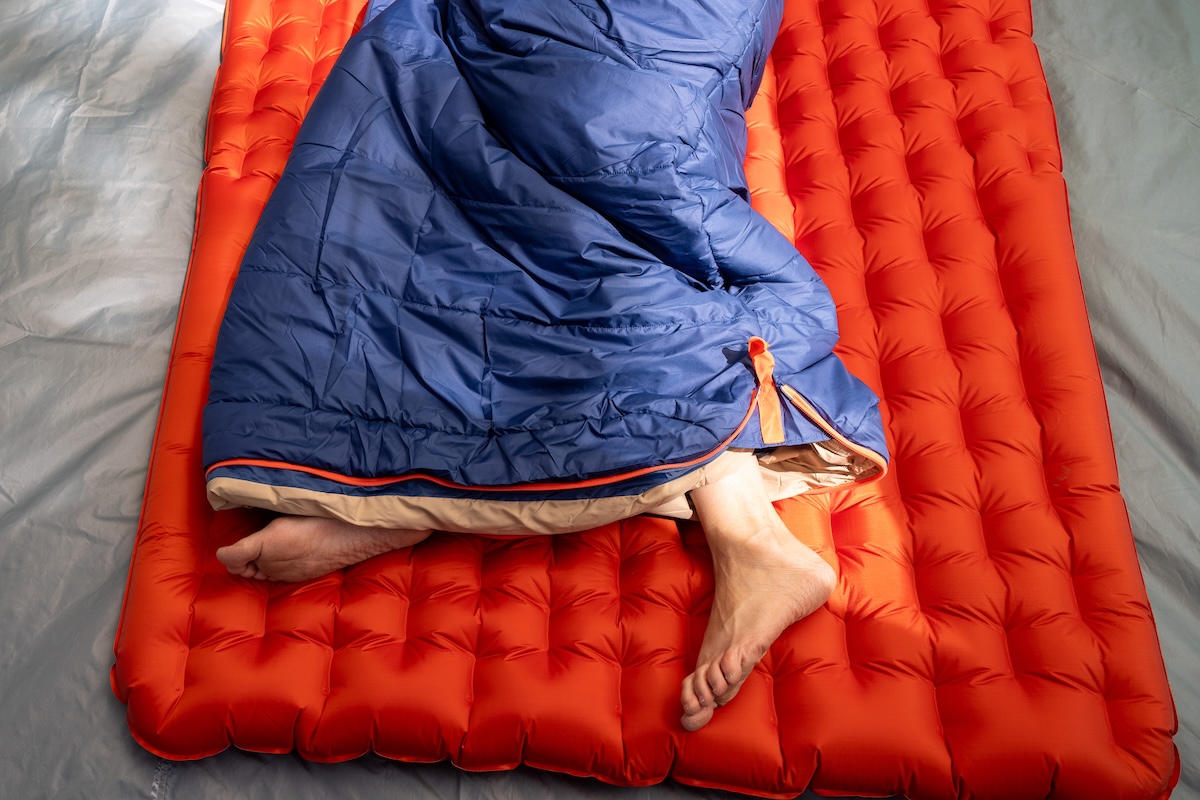
As someone who sleeps curled on her side and flips over multiple times per night, I appreciated the extra room to move. Unlike in a mummy bag, I wasn’t rolling the entire bag with me. I could actually turn inside it, just like in a real bed. The soft fleece lining, especially around the face and upper body, added a level of coziness that felt like a luxury at camp. Our daughter said it best: This bag feels like a hug from a giant teddy bear.
Speaking of which, one morning our 7-year-old daughter climbed in to snuggle, and we were both able to (loosely) fit beneath the unzipped top of the bag. It’s that roomy. If comfort is a priority for you, especially as a cold-sleeping adult who camps regularly, this bag is worth considering.
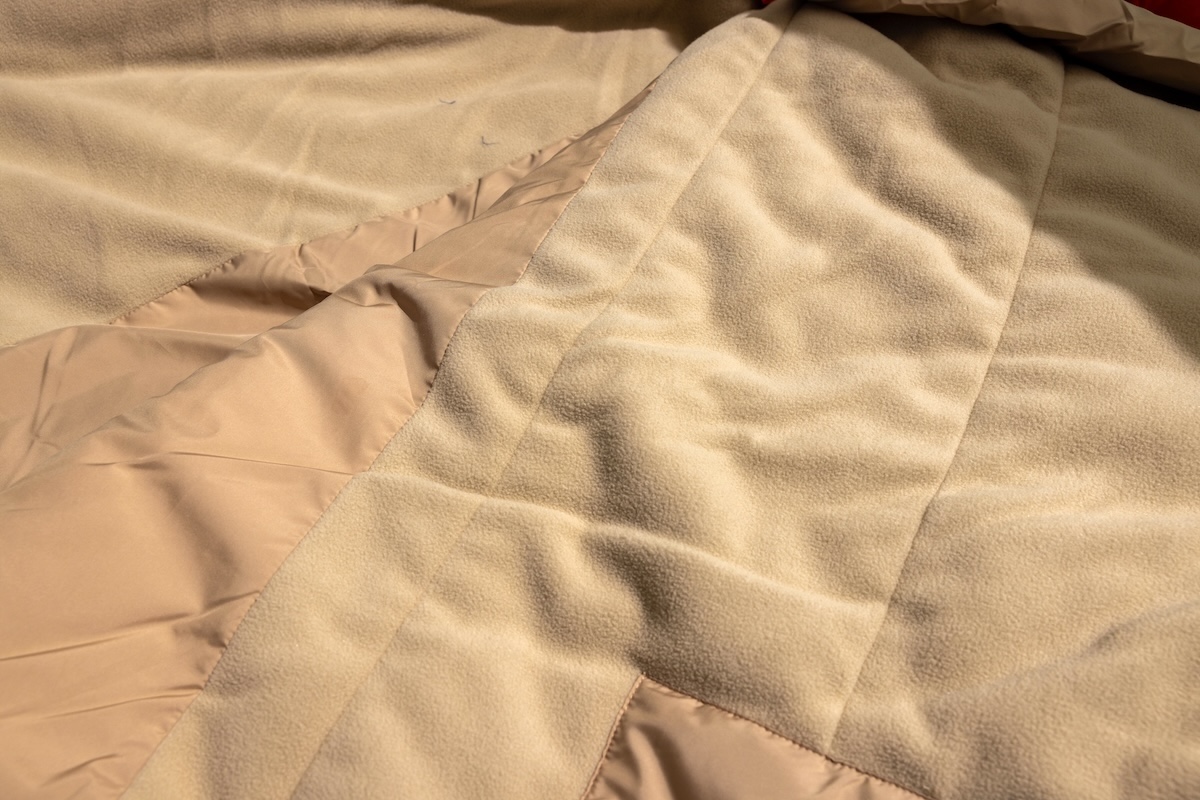
At 4 pounds 14 ounces, the Wawona Bed 20 is far from the lightest on the market, but I’d argue that’s not its goal. It’s built for car camping, not thru-hiking the Pacific Crest Trail. You won’t want to haul this around in a backpack for more than a few feet, but for tossing in your vehicle and rolling into camp? Not a problem.
Getting the Wawona Bed back into its included stuff sack was drama-free, which I appreciate. We’ve all wrestled a large sleeping bag into a too-small stuff sack at dawn while the coffee brews, and it’s nobody’s favorite camp activity. No such issues here. My only complaint is that it doesn’t come with a mesh storage sack. Long-term storage in a tight stuff sack isn’t great for insulation, and I always store my bags uncompressed in our garage. That’s a small miss, but worth noting.
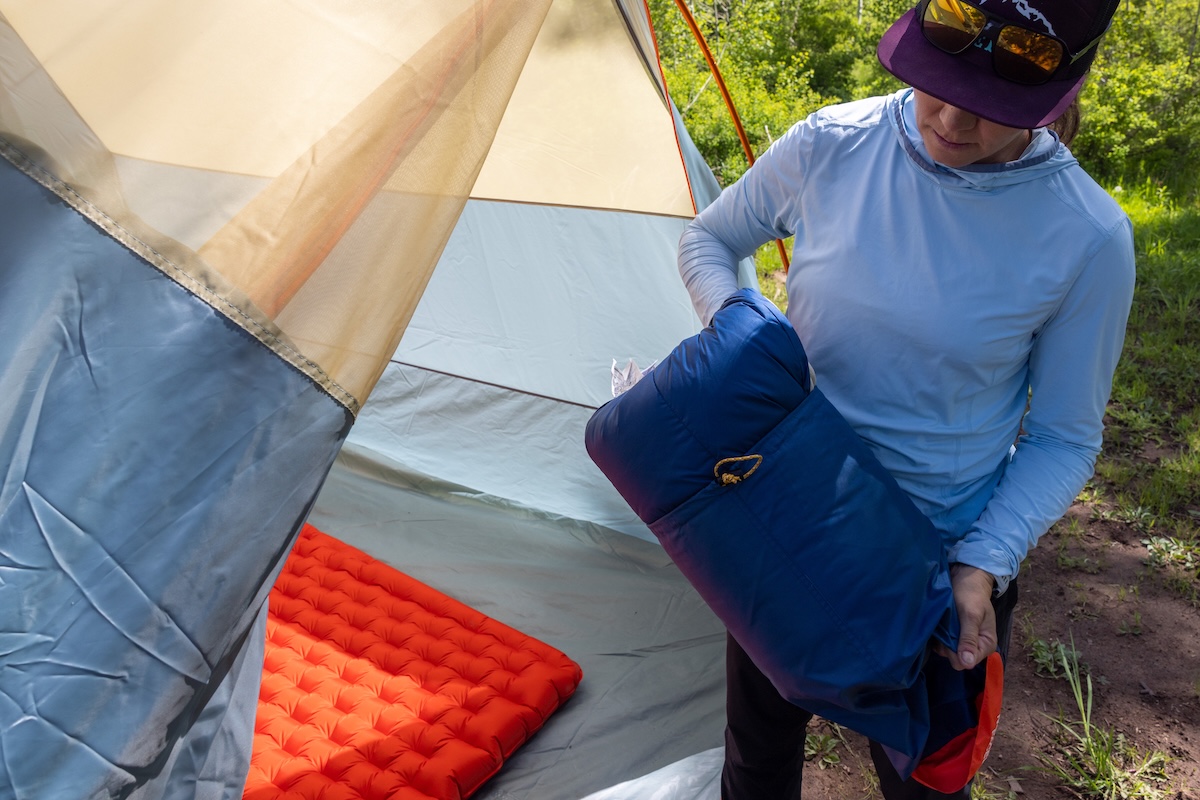
The North Face is a household name, so it comes as no surprise that this sleeping bag is a high-quality product. The body is made from 50-denier recycled polyester ripstop with a 50-denier recycled polyester taffeta lining that feels smooth and soft against the skin. The zippers feel solid, and the stitching throughout is tight and clean. No loose threads or cold spots popped up during my testing.
For reference, our rescue pup is a 1-year-old who’s not exactly delicate. He slept at the foot of the bag a couple of nights, and the Wawona shrugged it off without any bonus snags or loose threads, despite his pointy little claws. That kind of durability matters when your gear is being used in real-life, chaotic family camping scenarios.
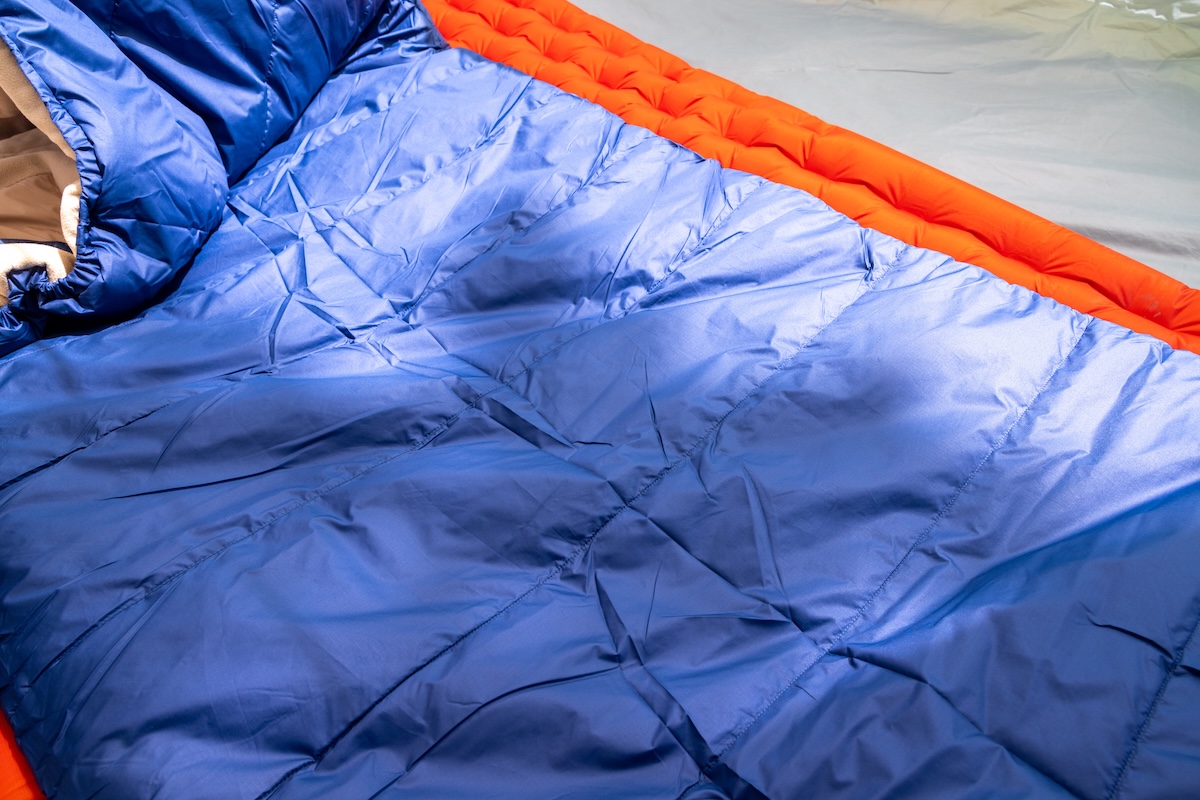
Zippers
This bag boasts a fantastic zipper design. There’s a full-length YKK zipper that runs around the bottom corner, allowing you to completely unzip the bag and use it like a blanket, making it perfect for warm nights or slumber parties in your basement. But the 15-inch secondary YKK zipper on the opposite side is the real game-changer. It lets you fold the top of the bag down like a quilt or a real bed, making it feel way less like outdoor gear and more like being at home. For those of us who like to layer blankets or fold down our comforters, this little detail makes a big difference.
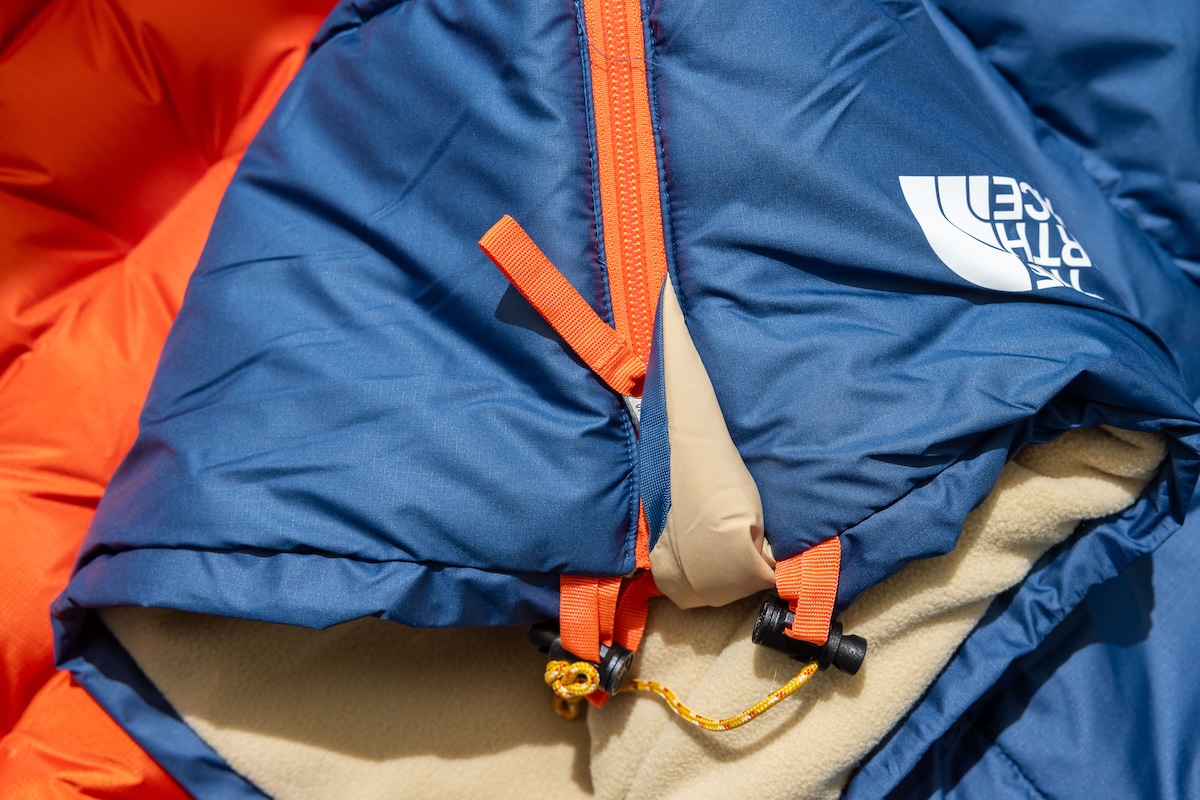
Internal Pocket
The Wawona Bed 20 includes a single internal stash pocket (no zipper) located just above the chest area. It’s not huge, but it’s perfect for keeping your phone warm overnight so the battery doesn’t die. I used it every night and appreciated not having to fish around in the dark for my device.
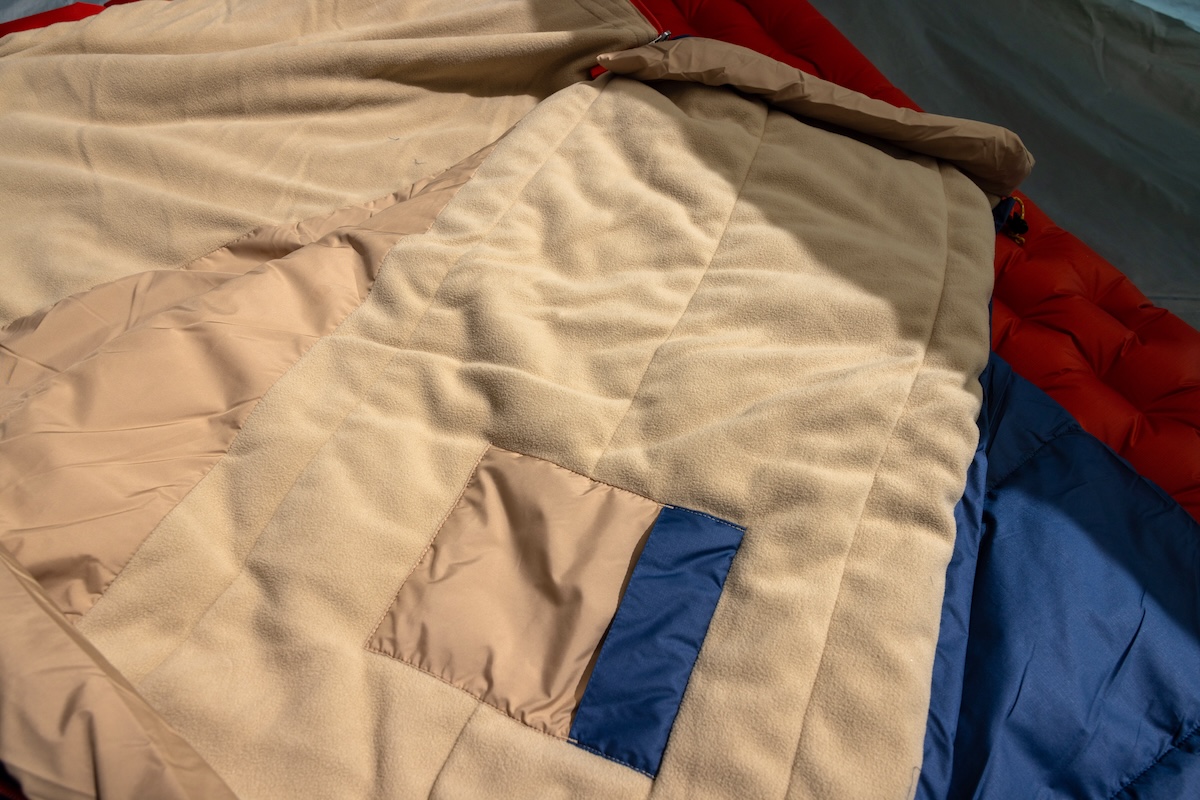
Pairing Compatibility
The zippers on the Wawona Bed 20 are fully compatible with a second Wawona Bed, so you can zip two bags together into a roomy double. While I didn’t have a second one to test this with, my husband and I love this feature in our other bags. Many “double” bags are clunky or have mismatched zippers, but this one is designed to eliminate that issue. At this price point, that’s a thoughtful inclusion for couples or families who co-sleep while camping.
The Wawona Bed 20 uses 100% recycled polyester in both the shell and insulation, which is a growing standard in the outdoor industry—but still commendable. The North Face continues to expand its commitment to using recycled materials and eliminating single-use plastics, and this bag is part of that shift. While they don’t share granular details about carbon offsets or lifecycle impact for this specific model, it’s clear the brand is moving in the right direction.
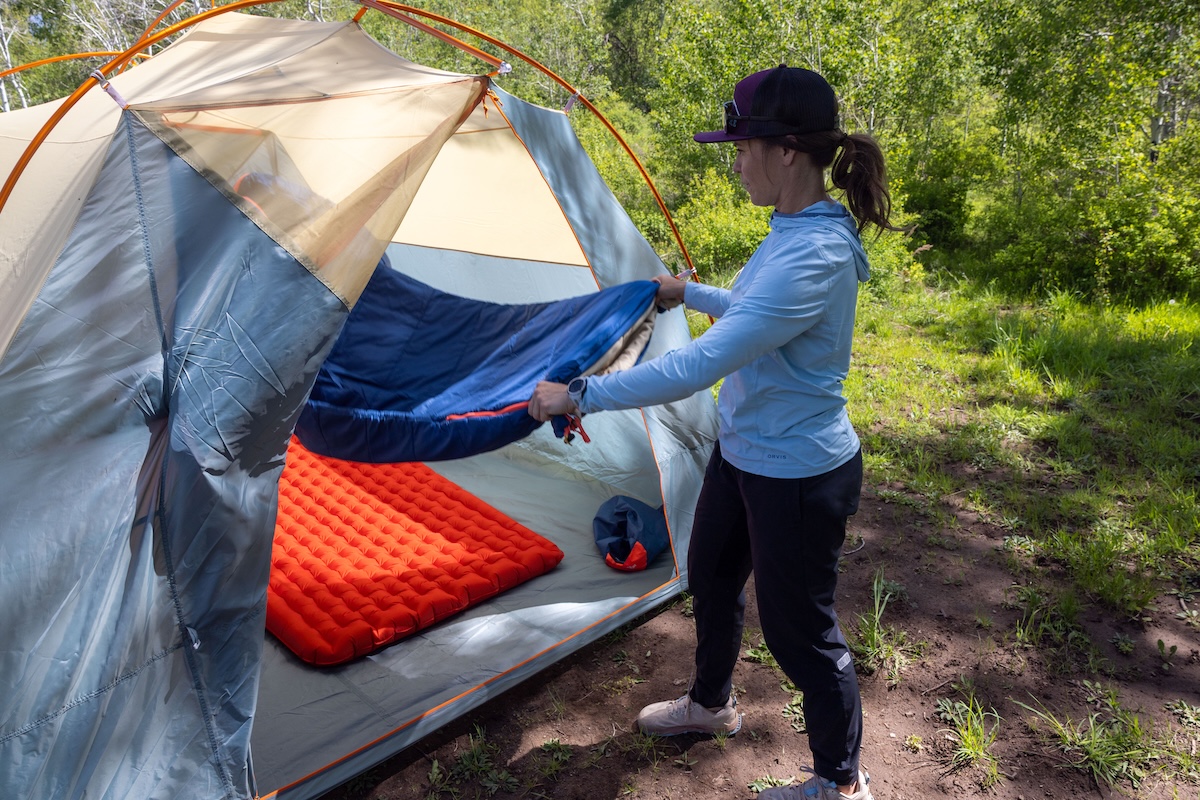
The North Face’s “Exploration Without Compromise” designation applies to the Wawona Bed 20, meaning it meets their internal sustainability criteria. Without getting too far into the weeds, a product must meet the following tenets to qualify for this designation: use at least 75% recycled content, avoid intentionally added PFCs or "forever chemicals", and meet the brand’s criteria for responsible material sourcing. While not the greenest sleeping bag on the market, it’s a solid step forward and a better choice than cheaper, petroleum-heavy synthetics.
I tested the Wawona Bed 20 for this review, but The North Face also offers a host of other Wawona sleeping products. The lineup includes the Wawona Bed 35, a lighter-weight version intended for warmer nights at $10 less. They also have the Wawona Bed Double, which offers an oversized setup for couples, co-sleeping parents, or anyone who simply prefers to spread out without restriction. Finally, there's the Wawona Fuzzy Blanket, a fleecy camp blanket that matches the cozy aesthetic of the sleeping bags and can be layered over the top or used on its own around camp. If you're outfitting your entire sleep system, these pieces are meant to work together, whether you're pairing two singles into a double or mixing the blanket and the 35 for a flexible layering setup.
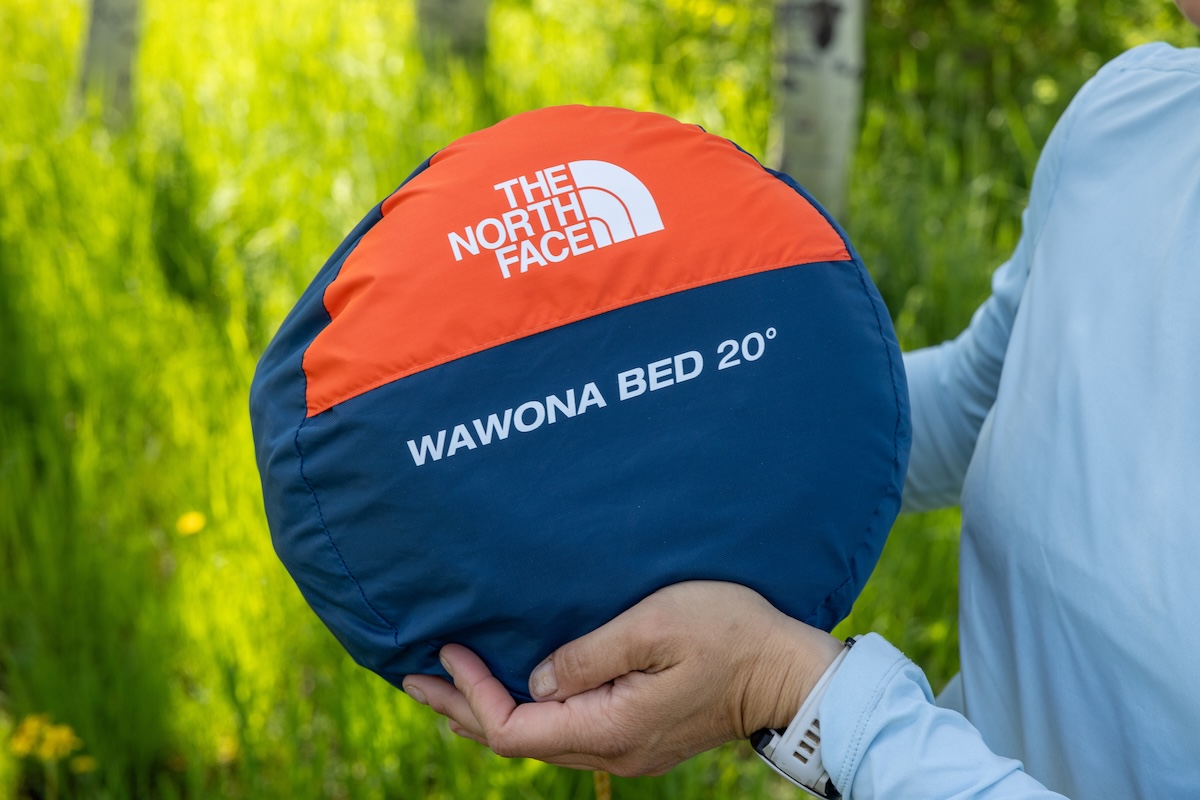
| Sleeping Bag | Price | Temp | Insulation | Weight | Packed Size |
|---|---|---|---|---|---|
| TNF Wawona Bed 20 | $130 | 20°F | Synthetic | 4 lb. 14.3 oz. (regular) | 11.75 x 17 in. |
| Teton Gear Celsius 0 | $80 | 0°F | Synthetic | 5 lb. 0 oz. (one size) | 10 x 15 in. |
| Coleman Brazos 20 | $59 | 20°F | Synthetic | 6 lb. 15.2 oz. (one size | 11.5 x 19 in. |
| The North Face Cozy One Bag | $300 | 15°, 30°, 50°F | Synthetic | 10 lb. 2 oz. (regular) | 26 x 14.5 x 11 in. |
If comfort is your top priority, the Wawona Bed 20 is a great choice, but there are certainly other options to consider. The Teton Gear Celsius 0 boasts a lower temperature rating (0°F) that adequately delivers on warmth (though we'd put the comfort rating closer to 20°, putting it in line with the Wawona). However, it’s bulkier and uses lower-end materials, making it really tough to get back into its stuff sack. You’ll save money, but the tradeoff is less refinement, and possibly less durability.
The Coleman Brazos 20 is another wallet-friendly option and our top pick for a budget-friendly bag, clocking in a whopping $71 less than the Wawona. While it technically has the same temperature rating, it doesn’t match the Wawona in comfort, durability, or features. But there’s a lot of value here, especially if you'd like to stock up on sleeping bags for the family or buy two bags to zip them together. To learn more, check out our in-depth review of the Brazos 20.
The North Face’s own Cozy One Bag adds a modular element, with layers you can add or remove to adjust the level of warmth. It’s more versatile in theory, but also more complicated and less fuzzy-teddy-bear in feel. It’s also massively heavy at over 10 pounds, and the price tag is more than double the Wawona Bed 20. Overall, the Wawona hits a sweet spot: not the cheapest, not the warmest, but absolutely one of the most comfortable bags for casual to regular car campers. If you go camping once a year, you can find cheaper options. But if you're out a few times each summer and value sleep quality? The Wawona Bed will make your nights in the wild feel more like home.
Back to The North Face Wawona Bed 20 Review See our Camping Sleeping Bags Guide